Discover the top template for technical documentation platforms. We analyze features, use cases, and limitations to help you choose the best solution.
Crafting effective technical documentation is a critical, yet often challenging, task for any development team. A well-structured document ensures clarity, accelerates user onboarding, and reduces the support burden. The primary obstacle is not a lack of information but the difficulty in organizing complex technical details into a coherent, accessible format. Starting from a blank page is inefficient and frequently leads to inconsistent and incomplete results. This is precisely the problem a high-quality template for technical documentation solves.
This curated list provides a direct path to finding the right framework for your specific project, whether you are documenting an API, a software development kit (SDK), or an internal knowledge base. We will analyze twelve of the most effective platforms and templates available, from dedicated AI-powered solutions to open-source static site generators. Each entry includes a practical analysis of its core features, ideal use-case scenarios, and a frank assessment of its limitations to help you make an informed decision.
For each option, you will find direct links and visual previews to streamline your evaluation process. Our goal is to move beyond generic feature lists and offer a resource that guides you to the optimal template for technical documentation for your team’s unique workflow and technical requirements. For teams looking to accelerate this process even further, platforms like DocuWriter.ai can generate comprehensive documentation from your source code, providing a structured starting point in minutes.
DocuWriter.ai redefines the concept of a “template for technical documentation” by moving beyond static formats into a dynamic, AI-powered generation platform. Instead of providing a pre-built structure to fill in manually, it automatically creates comprehensive documentation directly from your source code. This approach positions it as a premier solution for development teams seeking to eliminate the time-consuming and error-prone task of manual documentation. The platform’s core strength is its ability to produce highly accurate and consistent code and API documentation with minimal human intervention.
Its standout feature set extends far beyond simple generation. DocuWriter.ai includes an entire suite of developer productivity tools, such as AI-driven code refactoring, automated UML diagram creation, and Swagger-compliant API documentation. This makes it a comprehensive toolkit rather than a single-purpose tool. For teams grappling with diverse tech stacks, the platform’s code language converter is invaluable for translating snippets between different languages and frameworks.
DocuWriter.ai offers a flexible, credit-based subscription model starting at just $19/year, making it accessible for solo developers, startups, and large enterprises. While usage monitoring is necessary for high-volume projects, the significant time savings and enhanced code quality offer a compelling return on investment.
Ready to automate your technical documentation? Explore DocuWriter.ai today.
Atlassian Confluence is a powerful, team-centric collaboration platform that excels at creating internal, wiki-style technical documentation. Rather than offering standalone files, Confluence provides a “Documentation Space” blueprint, which acts as a comprehensive template for technical documentation hubs. This blueprint automatically generates a pre-configured homepage with a search bar and a structured page tree, making it exceptionally easy for teams to start organizing content immediately.
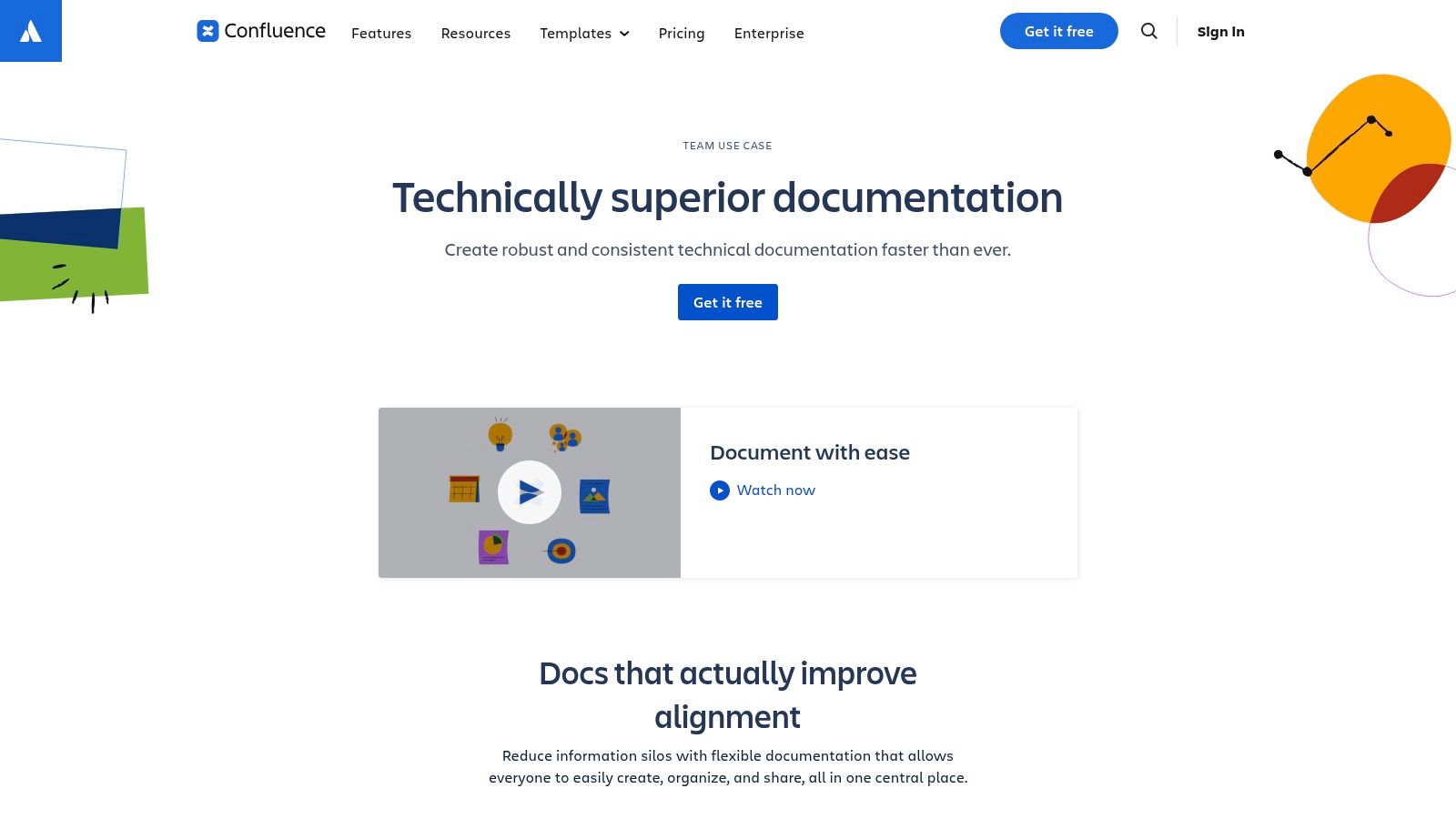
The platform is ideal for agile teams already using other Atlassian products like Jira, as the native integration allows for seamless linking between development tasks and their corresponding documentation. Features such as page versioning, comments, and notifications are deeply integrated, supporting a collaborative review and update process.
Website: Atlassian Confluence for Technical Documentation
Notion has evolved into a go-to workspace for many teams, and its Template Gallery serves as a powerful marketplace for jump-starting documentation projects. Rather than providing a single file, the gallery offers entire pre-built documentation hubs that can be duplicated into your Notion workspace with a single click. This makes it an excellent source for a turnkey template for technical documentation, complete with sections for release notes, API guides, and troubleshooting articles.
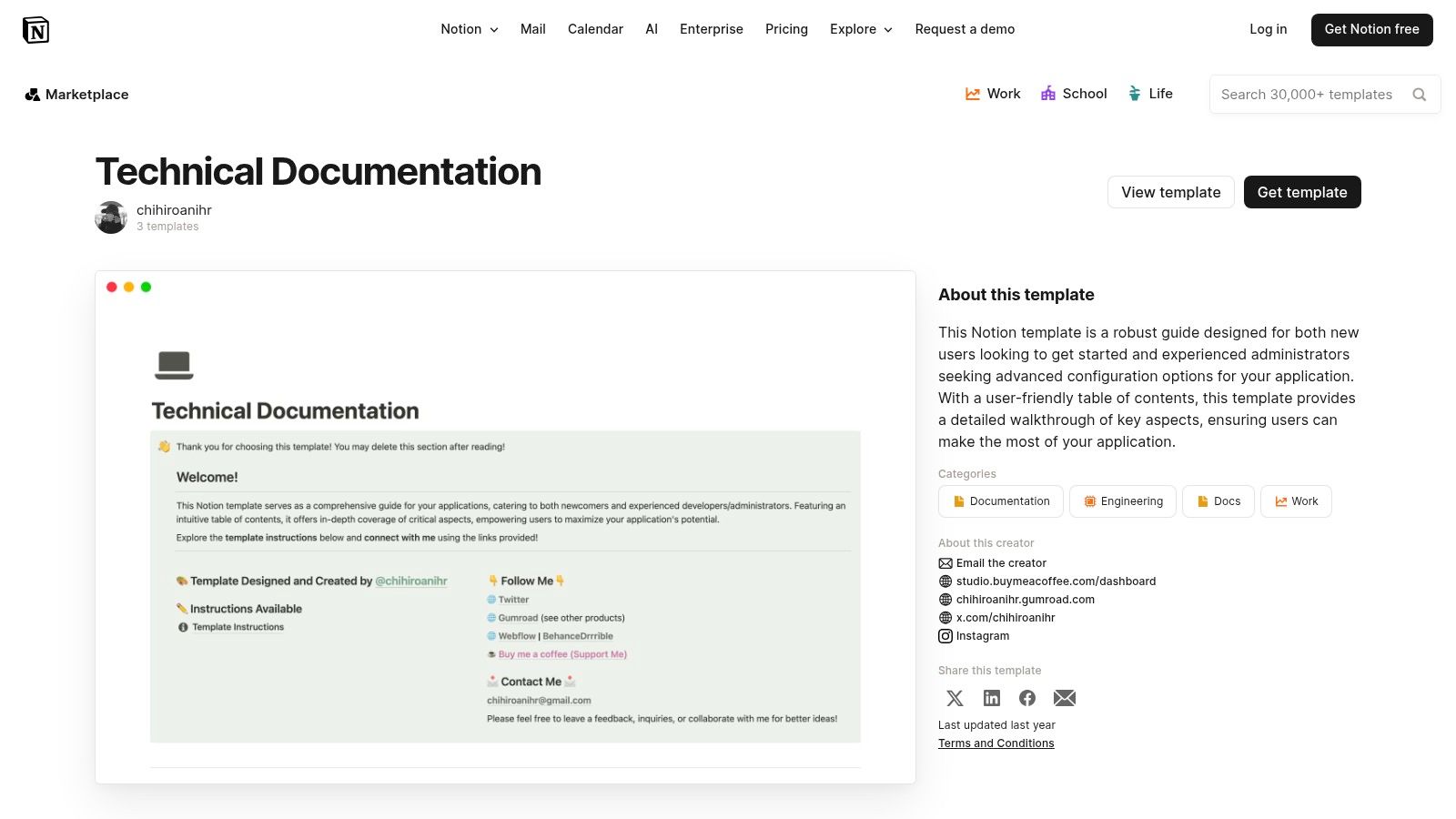
The platform excels at creating live, collaborative internal wikis that are accessible across web, desktop, and mobile devices. For content creators looking to streamline their workflow, it’s helpful to consider how integrations can improve productivity; for instance, tools for enhancing Notion’s capabilities with voice typing can significantly speed up the process of drafting detailed guides. Many of these templates are community-created, offering a wide range of structures suited for different project needs.
Website: Notion Template Gallery for Technical Documentation
GitBook is a modern, hosted documentation platform designed to create beautiful, user-friendly knowledge bases with minimal setup. It offers a structured editing experience that feels like a polished template for technical documentation right out of the box. Instead of managing builds and deployments, teams can focus entirely on writing content within a clean, collaborative interface that includes version control powered by Git.
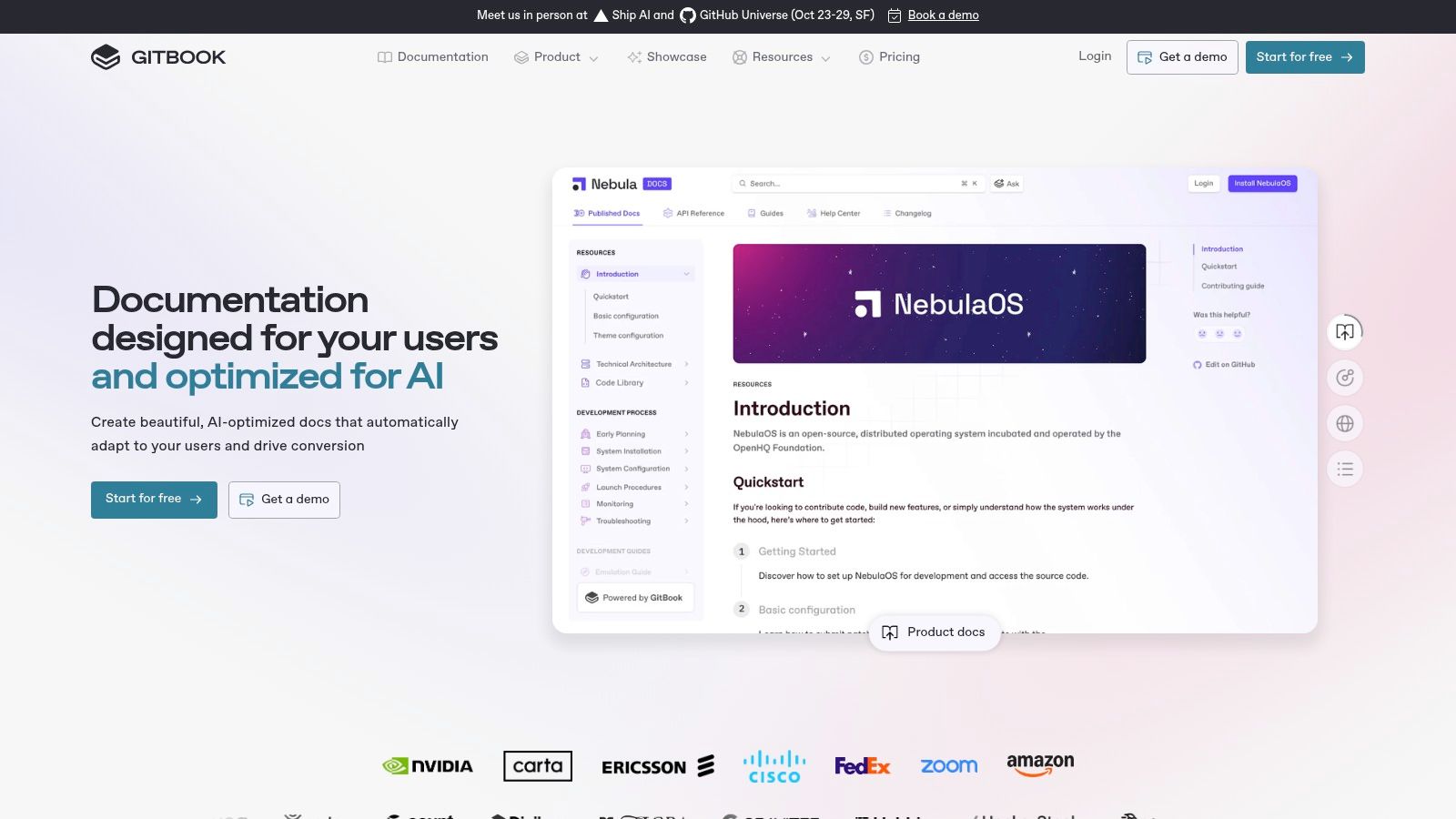
The platform is engineered for speed and simplicity, providing instant public or private documentation sites complete with powerful search, site theming, and custom domains. Its AI-powered features, like “AI Ask,” allow users to get instant answers from the documentation, while native support for OpenAPI specifications makes it a strong choice for API-focused products. The turnkey hosting and polished user experience make it a top contender for teams prioritizing ease of use.
Website: GitBook
Docusaurus is an open-source static site generator built with React, specifically optimized for creating clean, maintainable, and versioned documentation websites. It provides a production-ready classic theme that serves as an excellent template for technical documentation, complete with features like full-text search, configurable navigation, and versioning support right out of the box. This makes it a powerful choice for developers who want full control over their documentation’s look, feel, and deployment pipeline.
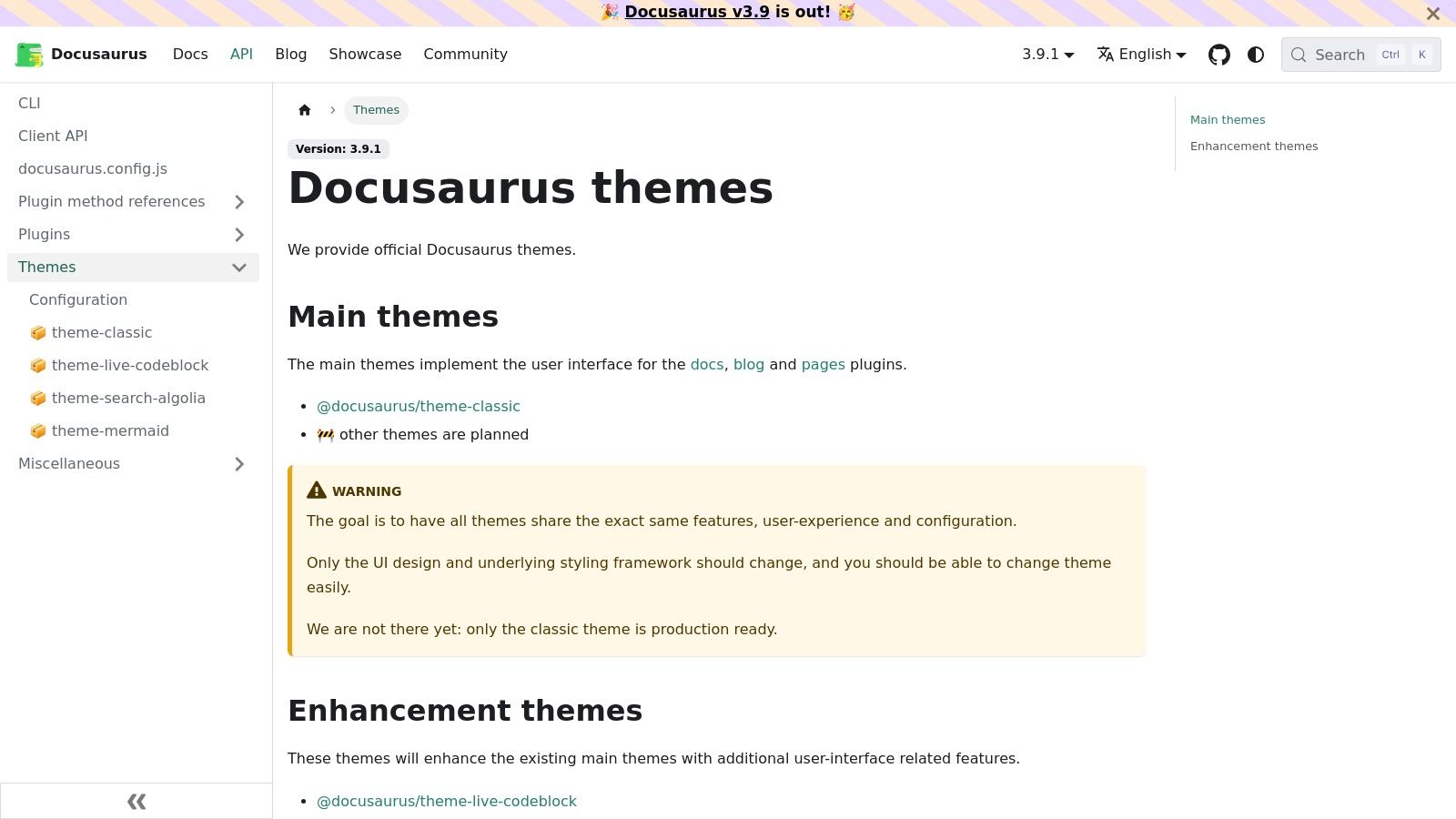
Backed by Meta’s open-source community, Docusaurus leverages modern web technologies, including MDX, which allows you to embed React components directly within your Markdown files. This capability enables rich, interactive content that goes beyond standard text and images. The entire platform is designed for a developer-first workflow, integrating seamlessly with Git for version control and deploying easily to services like Netlify, Vercel, or GitHub Pages.
Website: Docusaurus Themes Documentation
Material for MkDocs is a premier theme for the MkDocs static site generator, effectively functioning as a comprehensive template for technical documentation. It transforms plain Markdown files into a polished, modern, and feature-rich documentation website. This solution is ideal for developers who prefer a “docs-as-code” workflow, where documentation is version-controlled alongside the application source code. The initial setup is streamlined through a single mkdocs.yml configuration file.
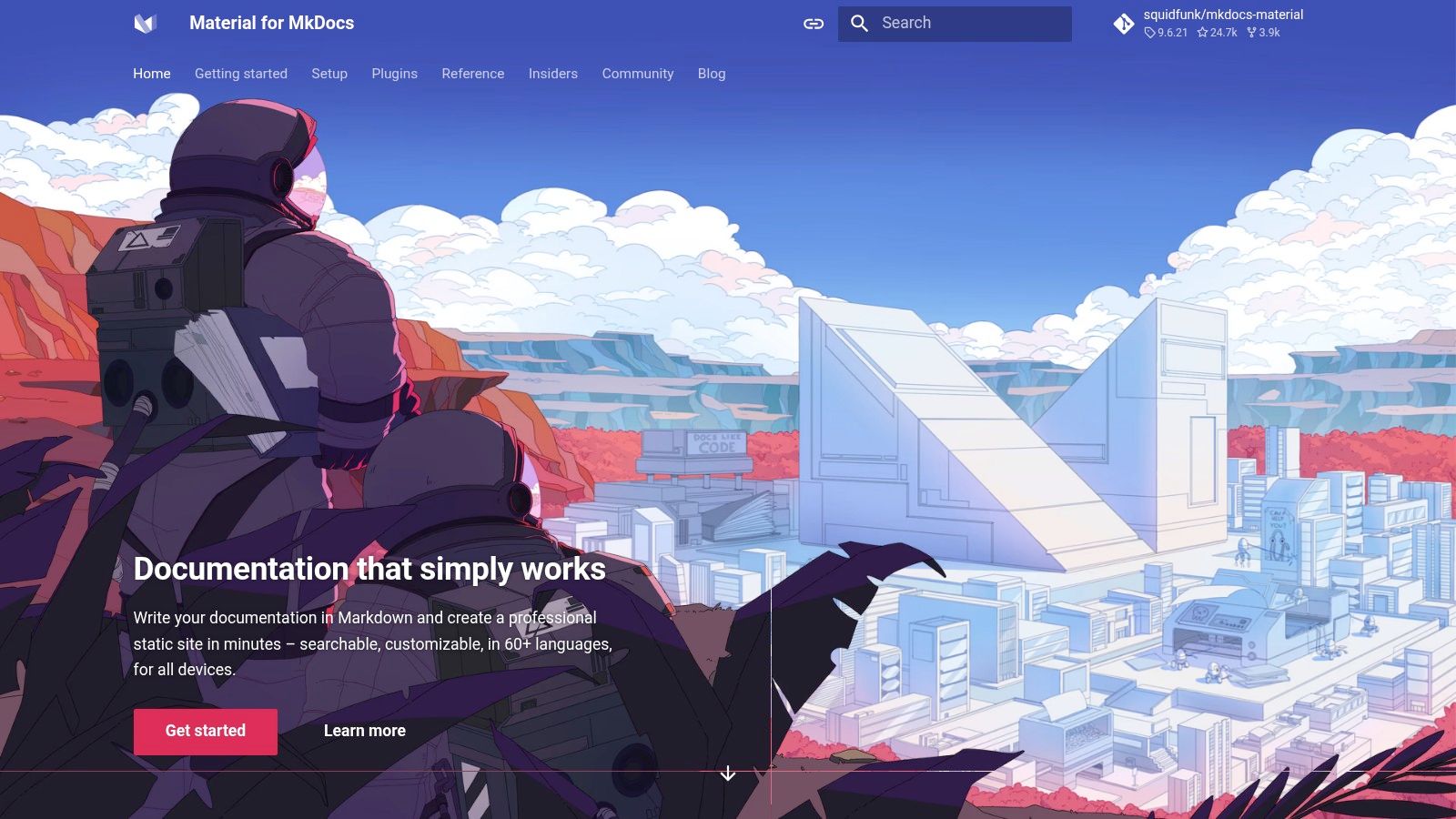
This platform excels at producing fast, responsive, and highly accessible documentation sites. When considering open-source solutions like Material for MkDocs for your technical documentation, exploring an ultimate guide to open-source document management systems can offer broader insights into managing your content. Its powerful client-side search, extensive customization options, and large community make it a top choice for projects of all sizes.
Website: Material for MkDocs
Read the Docs, in combination with the Sphinx documentation generator, offers a de-facto standard template for technical documentation for countless open-source projects. The official sphinx-rtd-theme is a mobile-friendly, feature-rich template that provides a classic, two-pane layout with a navigable table of contents on the left and content on the right. It is designed for projects documented with reStructuredText or Markdown, delivering a clean and highly readable user experience.
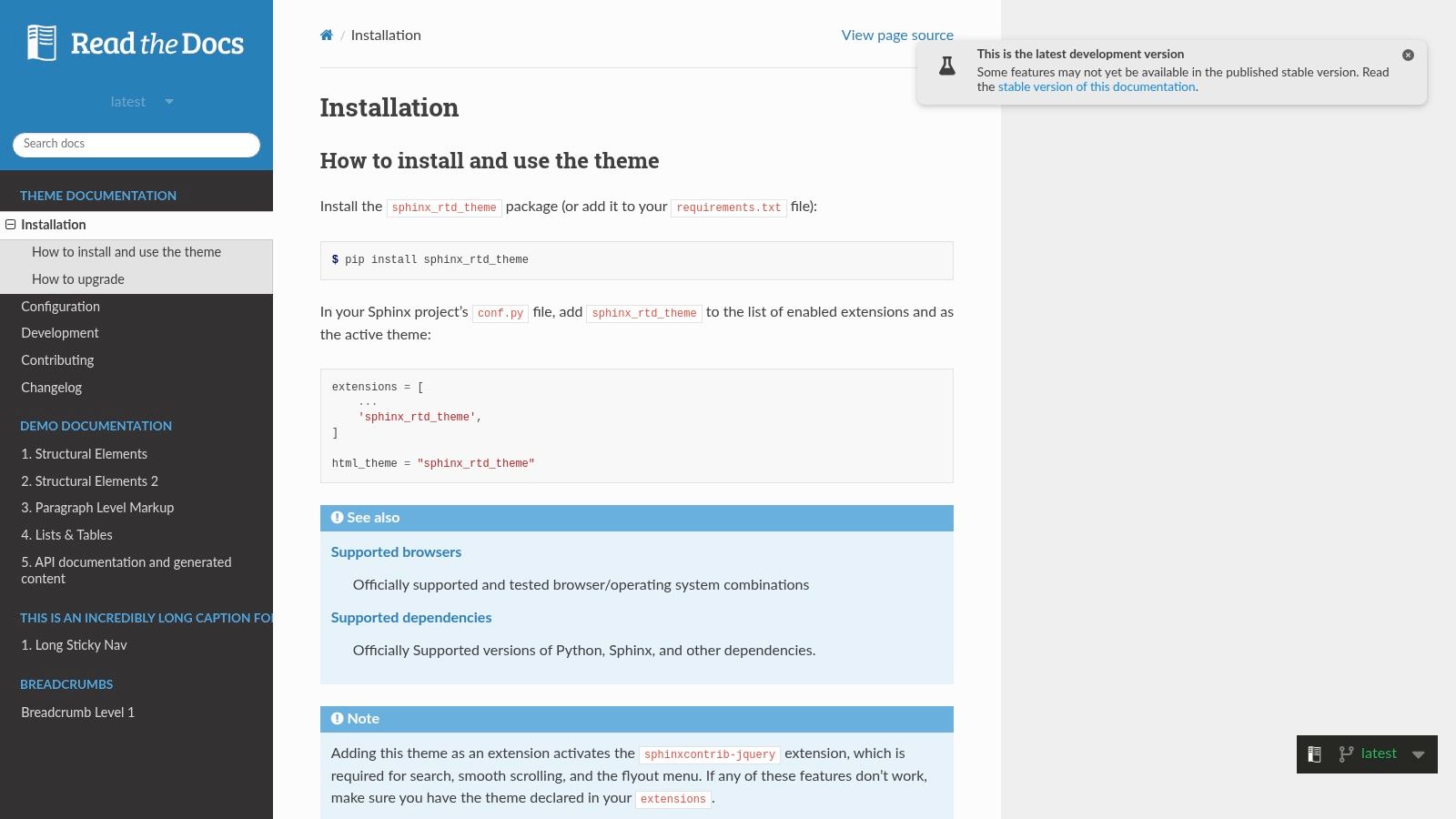
This theme is favored for its mature, battle-tested design that users instantly recognize. As the default theme on the Read the Docs hosting platform, it integrates seamlessly with version control systems like Git, automatically building and deploying documentation on every commit. This powerful combination automates the entire documentation pipeline, from writing to publishing.
Website: Read the Docs Theme Installation Guide
ReadMe is a hosted developer hub platform designed for teams who need to create polished, interactive API documentation quickly. It provides a comprehensive template for technical documentation out of the box, combining landing pages, detailed guides, and a powerful, auto-generating API reference section. This integrated approach allows developers to build a professional developer portal without starting from scratch, focusing on content rather than infrastructure.
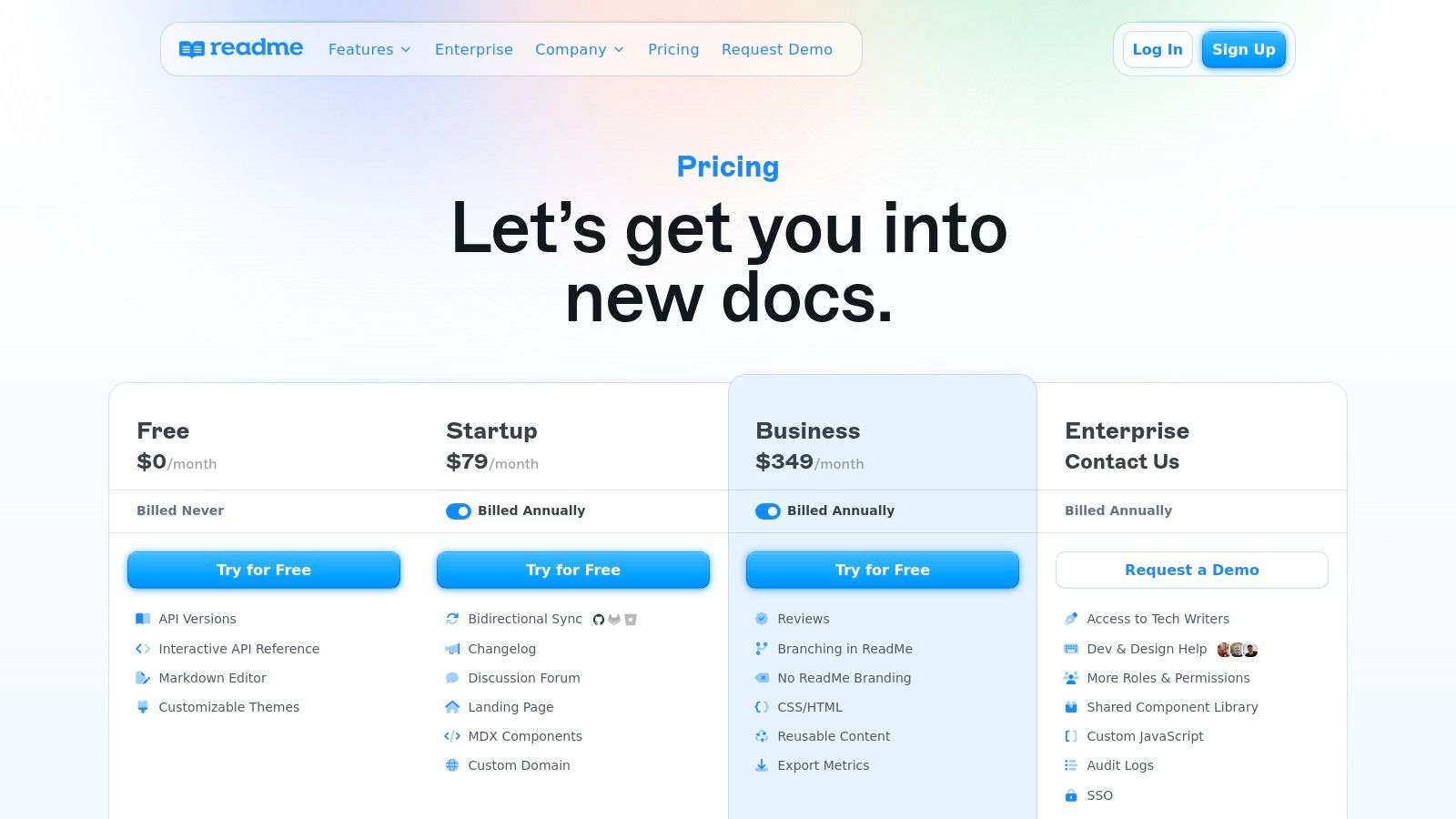
The platform’s standout feature is its interactive “Try It” functionality, which lets users make live API calls directly from the documentation. This hands-on experience significantly improves developer onboarding. With support for Markdown/MDX, GitHub synchronization, and collaborative review workflows, ReadMe streamlines the entire documentation lifecycle from creation to maintenance, making it a top choice for API-first companies.
Website: ReadMe Pricing
Document360 is a dedicated knowledge base platform designed for creating both internal and external documentation with a strong emphasis on structure and authoring workflows. While not a simple download, it offers a robust system where each article serves as a template for technical documentation creation, complete with pre-defined layouts, styling, and metadata fields. Its platform-based approach ensures brand consistency and content standardization across all published materials.
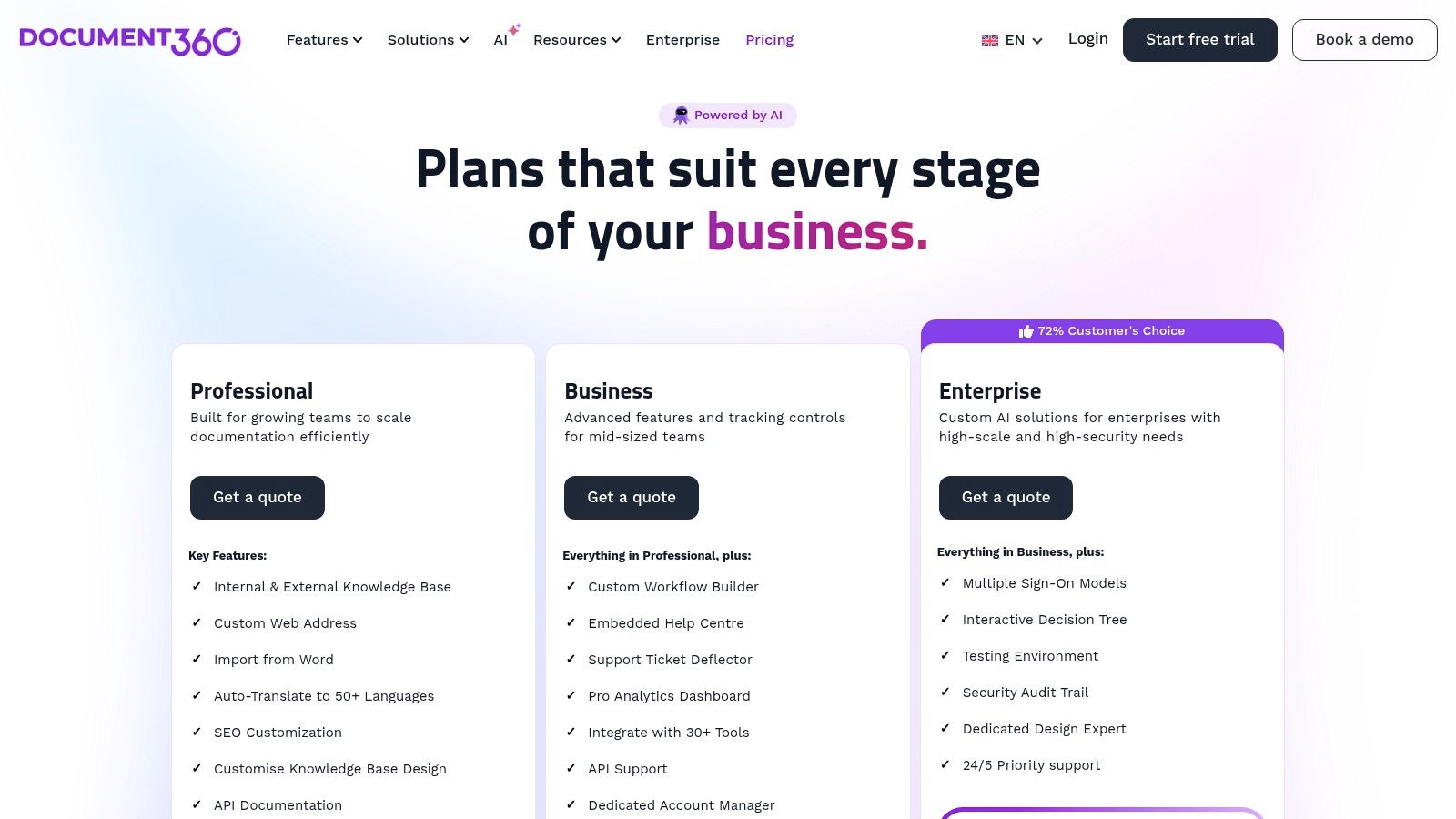
The platform excels with its enterprise-grade features, including granular version control, a sophisticated review and approval process, and powerful analytics to track content performance. For organizations needing to distribute documentation offline, Document360 provides a PDF template designer, allowing teams to create professionally branded, exportable guides directly from their knowledge base content. This makes it a comprehensive solution for managing the entire documentation lifecycle.
Website: Document360
MadCap Flare is a professional-grade help authoring tool (HAT) designed for enterprise-level technical communication. It moves beyond simple pages by offering comprehensive project templates for diverse outputs, including online help systems, knowledge bases, and print-ready PDFs. Its “start-new-project” wizard provides a robust template for technical documentation with various layouts like top navigation and tripane, which are ideal for complex product guides.
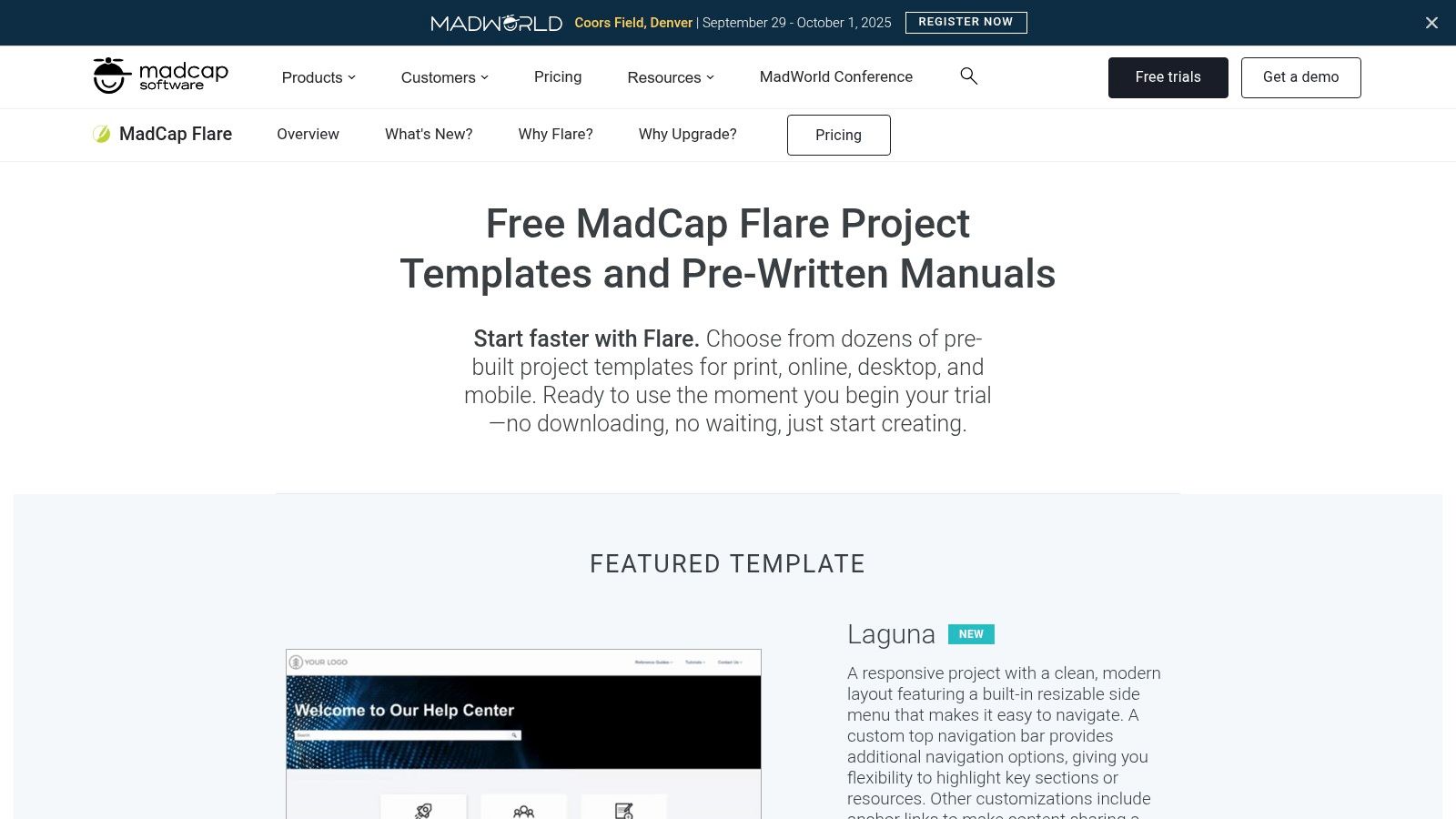
The platform’s core strength lies in its powerful single-sourcing capabilities, allowing writers to create content once and publish it across multiple channels with different formatting and branding. This topic-based authoring approach is highly efficient for managing large-scale documentation that requires consistent updates and delivery to various platforms, including integrations with Salesforce and Zendesk.
Website: MadCap Flare Project Templates
ClickHelp is an all-in-one, cloud-based platform designed for creating and hosting professional technical documentation. It provides a managed environment where teams can use a template for technical documentation to build user guides, knowledge bases, and API documentation without managing infrastructure. The platform offers a range of pre-built portal templates that can be customized with company branding, ensuring a consistent and professional look for both internal and public-facing content.
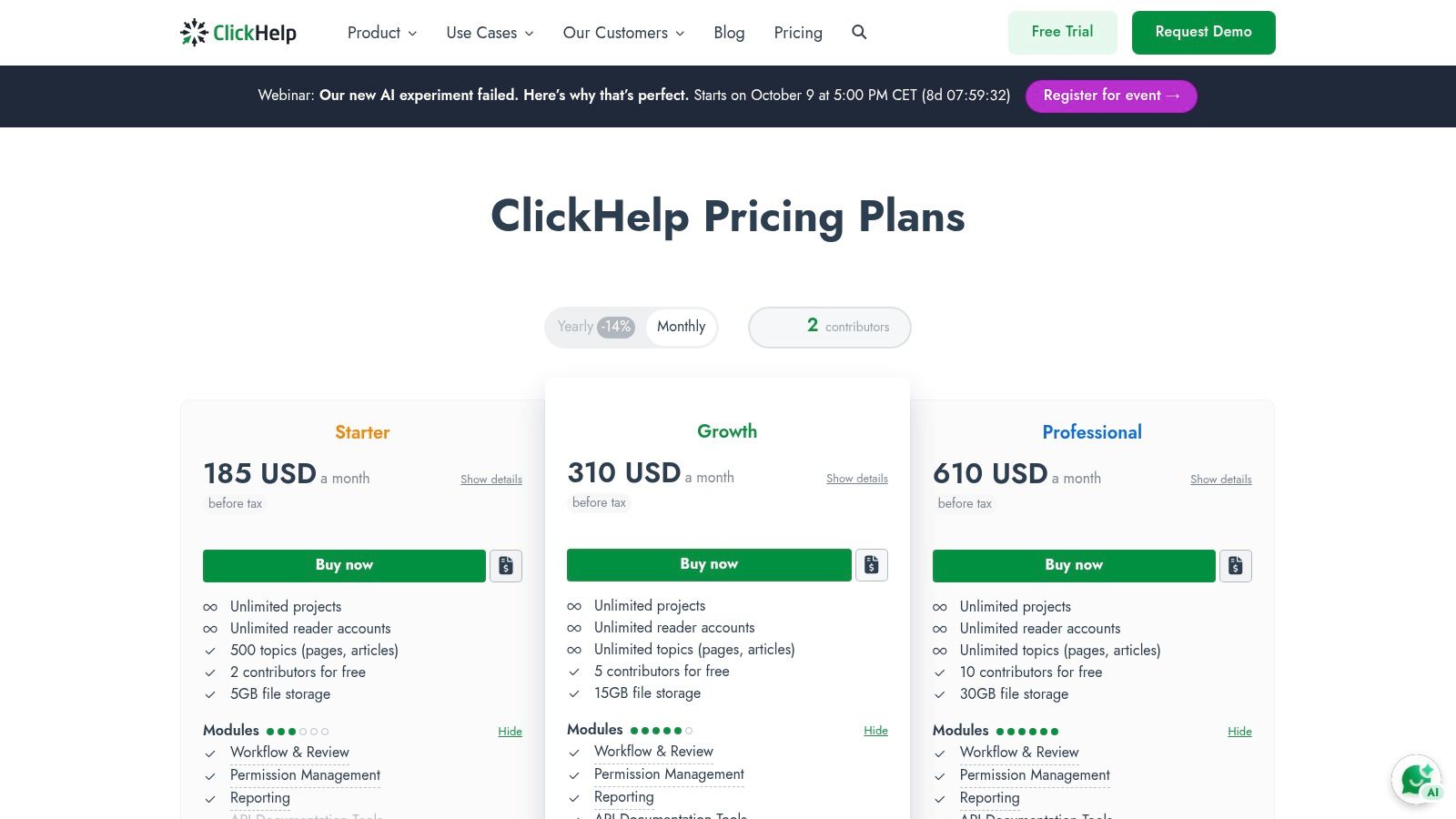
This tool is particularly suited for organizations that require robust governance features, such as structured review workflows, version control, and translation management. With optional add-ons like an AI-powered search tool (AnswerGenius) and REST API access, ClickHelp scales from a simple documentation tool to a comprehensive content delivery solution.
Website: ClickHelp Pricing
Paligo is an enterprise-grade Component Content Management System (CCMS) that leverages structured authoring for maximum content reuse and scalability. Instead of traditional documents, it uses “topics” as building blocks, which are assembled using publication templates. This approach provides a powerful template for technical documentation by ensuring that everything from API references to user guides maintains a consistent structure, voice, and format across all outputs, including PDF, HTML5, and Salesforce articles.
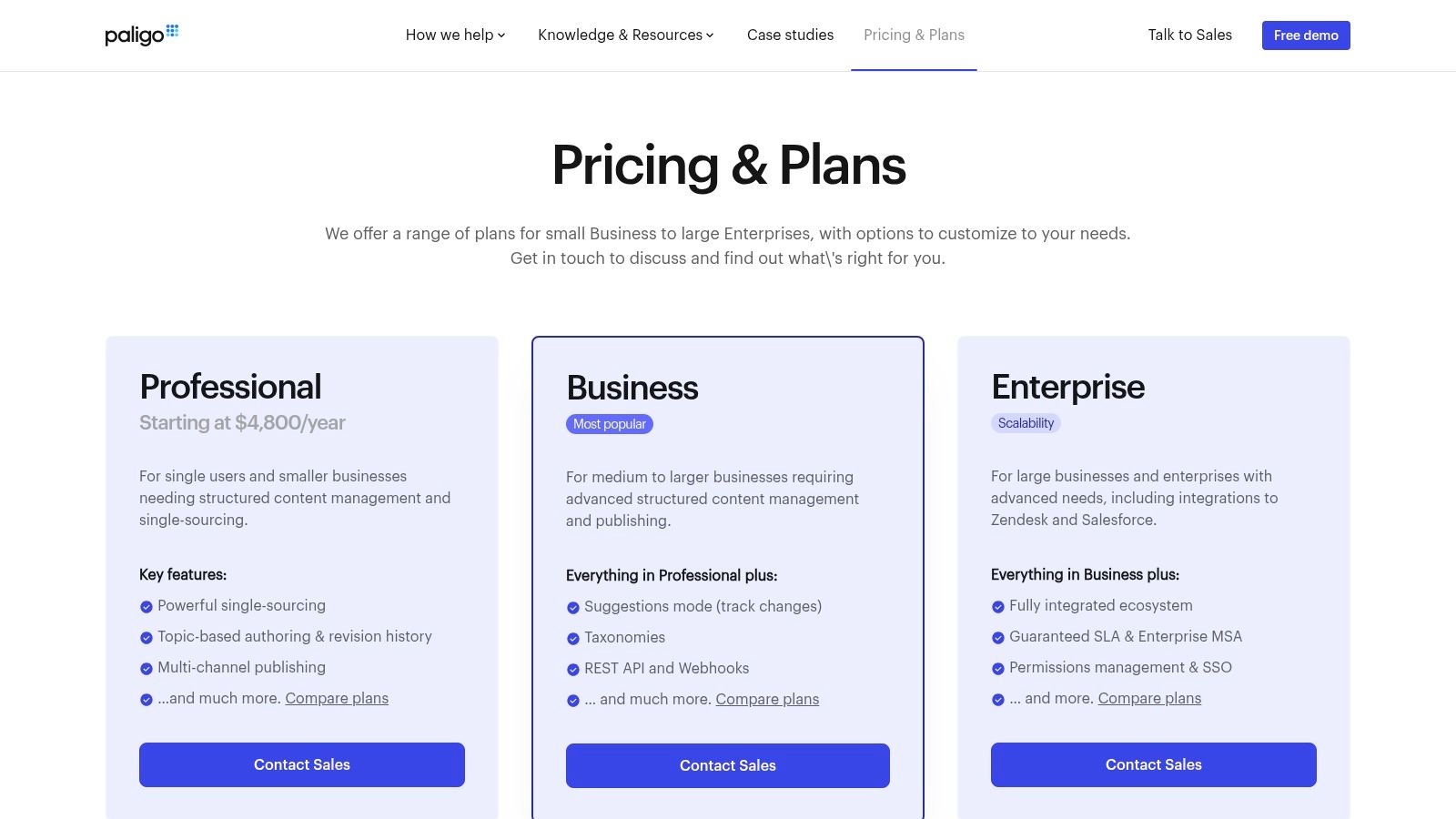
This platform excels at single-sourcing, allowing teams to write a piece of content once and reuse it in multiple documents. Features like branching, version control, and translation management are built-in, making it ideal for large organizations managing complex product documentation in multiple languages. Its robust integration capabilities via REST API and webhooks allow it to fit into sophisticated DevOps and content delivery pipelines.
Website: Paligo